Did you know hashtags were earlier used to mark numbers? But now, you’ll rarely see them being used that way. Instead, hashtags have become a major part of the social media world. They are the hero symbol to measure a brand’s social media strategy — to understand the reach of a social media post and analyze the sentiment of your brand.
But if you are still using #skincare or #Mondaymotivation to boost your engagement, you are probably doing something wrong.
Hashtags have come a long way from where they started. In the current social media era, the hashtags you use need to be super-targeted and niche specific.
Do you think you are using them that way?
Maybe not. And that’s the reason you are reading this article.
This article gives you an insider scoop on how to leverage hashtag marketing and effectively implement hashtags into your social media marketing.
You’ll learn:
- Why are hashtags an important part of your social media marketing?
- How to create a hashtag marketing plan to boost your social media channel?
Let’s dive in.
What is Hashtag Marketing?
Hashtag marketing helps you promote your brand, products, or services through strategic and well-researched keywords. Using the right hashtags helps in amplifying the brand’s reach and makes the content discoverable.
“It’s extremely hard to create a trending hashtag and bring people to you. It’s far better to listen, find out what’s trending, and bring yourself to the people.”
- Gary Vaynerchuk
As Gary Vaynerchuk says, hashtags don’t necessarily mean a way to attract your audience to you but it is a bridge through which you can move closer to your audience. And how can you do this? By understanding how hashtags can affect your social media marketing.
How do Hashtags affect your social media marketing?
Of the important elements of social media goals, driving engagement and attracting leads top the list.
It’s not just about engaging with your audience.
It’s not just about building brand awareness.
There’s much more…
Every post that goes live on a specific channel gets published with a set of hashtags.
Here’s how hashtags affect your social media marketing.
1. Empowers social listening
Social listening is an excellent way to be a part of your audience’s conversations and collect insights from their opinions to create user-generated content.
When you use this data to produce and distribute content, you are directly speaking to your audience and providing the solution they had been looking for.
Take a look at how Fitbit leveraged social listening to identify the emerging struggles and collected the data from its audience to generate a detailed report.

2. Sparks new conversations
Using powerful hashtags and starting conversations with your social media users can position yourself as a thought leader in the industry, and your audience feels much more engaged.
Here’s how Social Media Today does it by including the popular hashtags and asking a question. Asking questions is a great way to pique interest and get your audience to start with a conversation. They did exactly the same.

3. Improves customer experience
Customers can tag you and share their complaints and feedback with your branded hashtag. Isn’t it great to understand where your product lacks and how to improve it? When customers use your company’s branded hashtag; you can easily navigate through your hashtag, find out what customers are talking about you and gather feedback.
When your customers tag you or respond to your tweet with complaints, the social media team can instantly respond to them.
Furthermore, you can embed online form builder on your website and encourage your customers to take the survey and provide you with detailed feedback.
By enhancing your feedback system, you can come up with a better solution and prove your brand loyalty.
Here’s how Zomato does it.
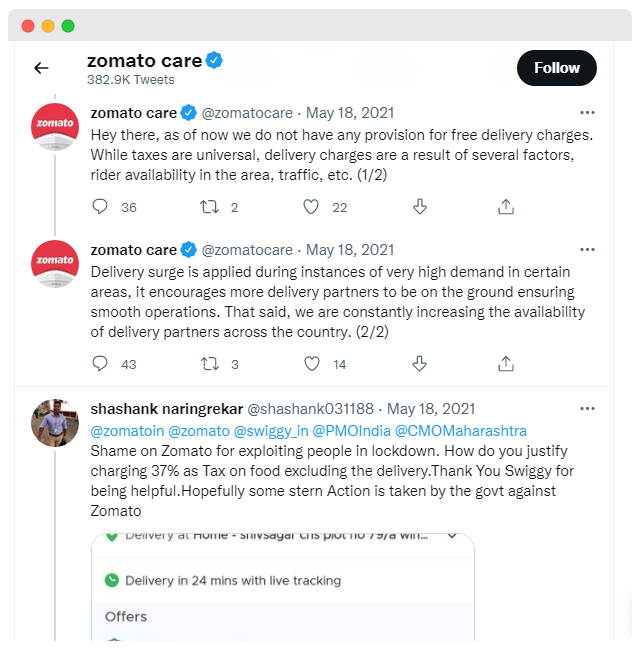
4. Enables your target audience to find you
With branded hashtags, people can easily find, tag, and follow you. If someone uses your hashtag and talks about you in their post, their audience will see the post and hashtag too. Outcome? Their audience can check out the hashtag, and you might get some new followers.
Here, Sugar Cosmetics uses #sugarcosmetics. Every time a user searches for this hashtag on any social media platform, they’ll find posts and mentions from the brand.

5. Helps showcase support for social issues
Brand building starts when you share ideas, care about people, and become involved with them. You can do this effectively by using hashtags connected to a more significant cause.
When sharing videos and images around the issue, you can use branded social hashtags to promote it.
Carmesi is well-known for speaking for the less spoken cause around women’s hygiene. Here, they have included #PMSsymptoms to showcase what they as a brand think and care about.
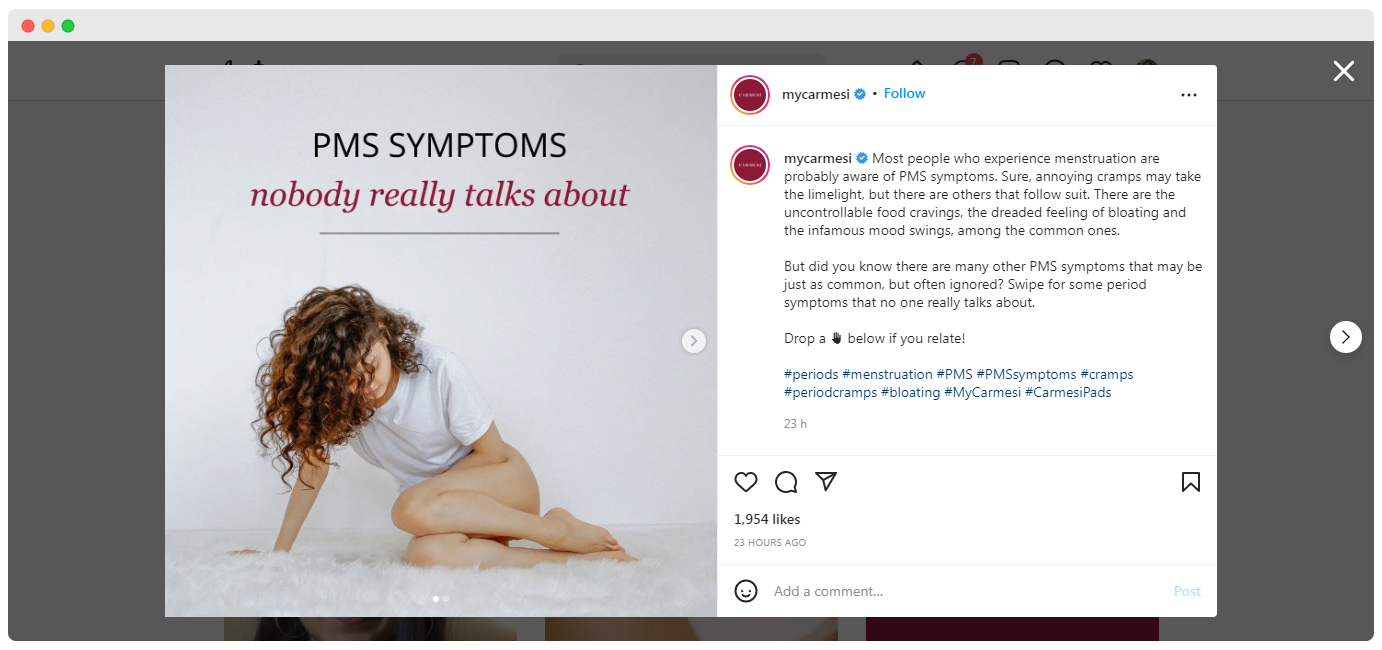
Plan for Your Hashtag Marketing Strategy
1. Research relevant hashtags
Before publishing a social media post, take a look at the volume of the hashtags. Ask yourself:
- Does the hashtag have a mass volume?
- Does the hashtag resonate with the context of my post?
When including hashtags, keep in mind — why you are including the hashtag. The hashtags you use should be niche specific.
For example, if your business revolves around skincare products, use hashtags like #skincaretips #skincareroutine, and so on.
There are a few kinds of hashtags you might want to use:
- Branded hashtags — mostly the brand names you want your audience to recognize you and increase brand awareness
- Product or service hashtags that are specific to the posts
- Location-based hashtags help you target a specific location like #indianfood
- Trending hashtags that will help you reach a wider audience
- Event hashtags — you can include special occasions and festival hashtags like Mother’s Day or International Women’s Day
- Campaign-specific hashtags that you use while running marketing campaigns
2. Choose the right hashtags for different social media platforms
Hashtags work differently for every social media platform. Just because 30 hashtags perform well on Instagram, they won’t work on Twitter and LinkedIn. That’s why you need to be thoughtful while using hashtags for each platform.
- Instagram, every social media post must have 20–30 hashtags.
- Twitter, 1–2 hashtags perform well.
- LinkedIn, you will see good results with 3–5 hashtags.
You can use social listening tools to find out the right hashtag. With these tools, you can filter the mentions according to the social media platform you’d like to focus on. The tool can help you generate a list of hashtags that you can use across social media platforms to analyze the mentions.
3. Find trending hashtags
Using trending hashtags is an excellent way to reach a wider set of audiences and engage with them. However, finding the right set of trending hashtags could be a task.
Here are a few ways you can find trending hashtags and use them in your social media marketing strategy:
Leverage the explore page
- Go to Instagram or Twitter’s explore section.
- Under the ‘For you’ and ‘trending’ sections of Twitter’s explore page, you’ll see the currently trending hashtags.
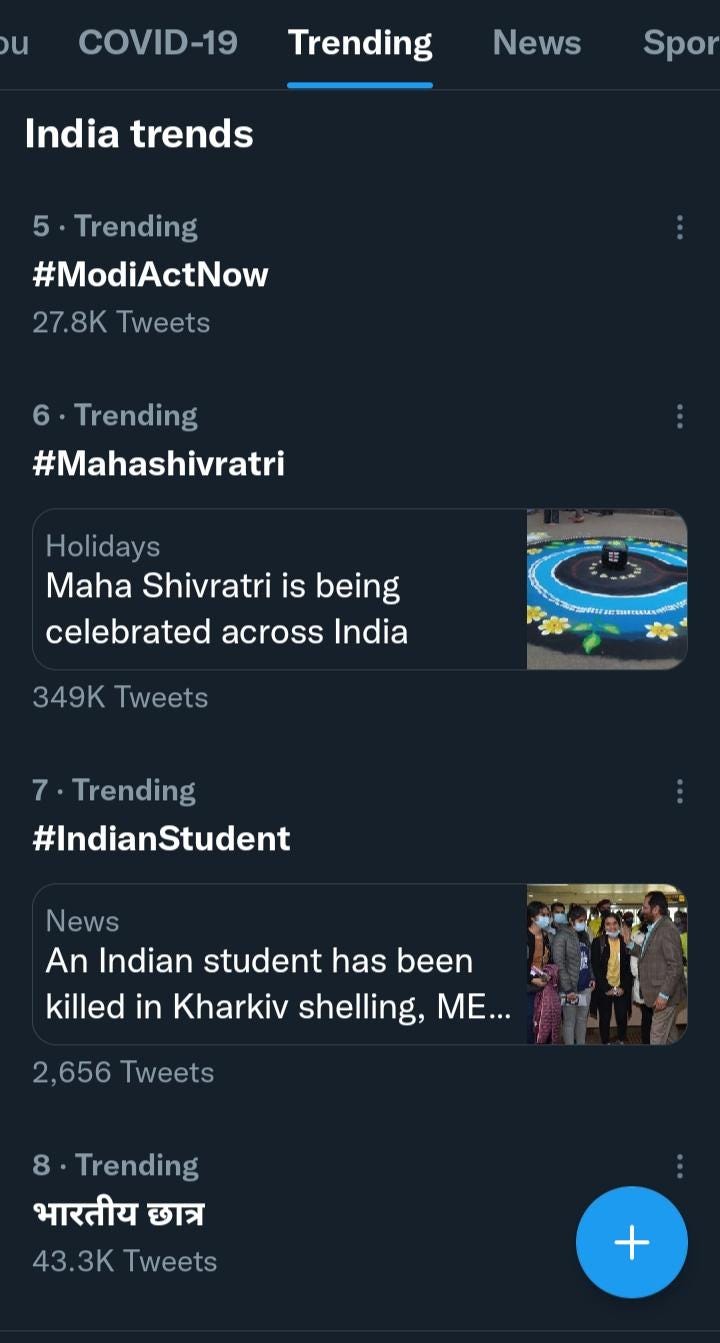
3. On Instagram’s explore page, you’ll see several social media posts.

Analyze the hashtags used under these posts and use them.

Use hashtag autosuggestions
Instagram’s search bar is a great place to find relevant hashtag suggestions. When you type a keyword on the search bar, you’ll see a list of hashtag suggestions rolled out by Instagram. You can use these suggestions and use them as guidance while researching for the right hashtags.
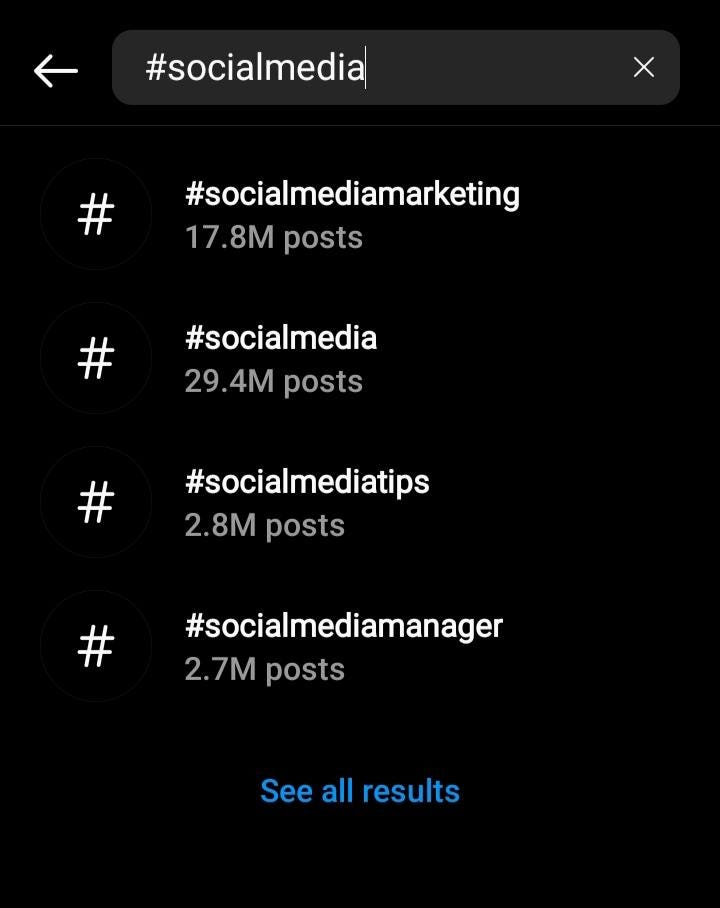
4. Use campaign hashtags
How often do you create marketing campaigns to target your audience? Out of these marketing campaigns, how many times do you track which campaign performed the best. Obviously, you would have a detailed dashboard of analytics tools to do this. But there’s a simple way to use hashtags too.
With campaign-specific hashtags, use one hashtag for each marketing campaign. This way, you can track multiple campaigns by analyzing the hashtags.
Tarte Cosmetics’ uses #trippinwithtarte on their YouTube video.
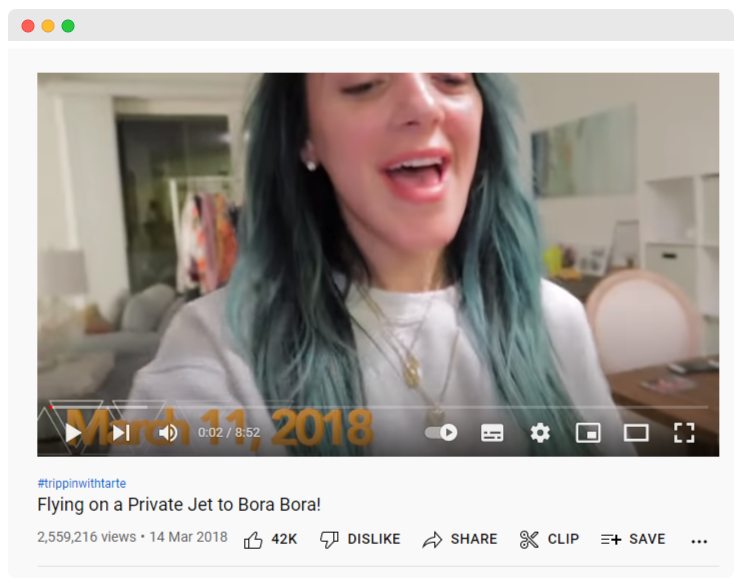
5. Leverage contests & giveaways
How many times have you seen influencers organize contests and giveaways? Many times.
Using contests and giveaways is a great way to gamify your social media marketing strategy. Many brands use this strategy to attract new followers and increase their brand presence.
Here are a few ways to leverage contests and giveaways:
- Announce giveaways where you give free gifts to the eligible audience and select winners through a random selection method.
- Ask questions to your audience and add a pinch of humor to engage your customers. Make sure you have a combination of easy hard questions to keep the audience engaged and offer an incentive to the winner who makes it through
- Make a personal connection with a photo contest where you ask your audience to share their favorite memory to enter the contest. Create a specific hashtag for these contests and encourage people to enter the contest with these hashtags.
When creating a strategy to organize contests, make sure you have directed your audience towards a CTA clearly. Some of the CTA examples you could include are ‘follow us’, ‘tag your 3 friends to enter the contest, ‘tell one thing you like about our brand’.
That’s how Lay’s did it by promoting their #DoUsAFlavour campaign. The brand organized a contest and asked their audience to cite their favorite Lays flavor and win $1 million for the winning flavor. They merged this strategy with influencer marketing and promoted the campaign through influencers. How did this help Lays? They attracted new followers while promoting the new flavor.
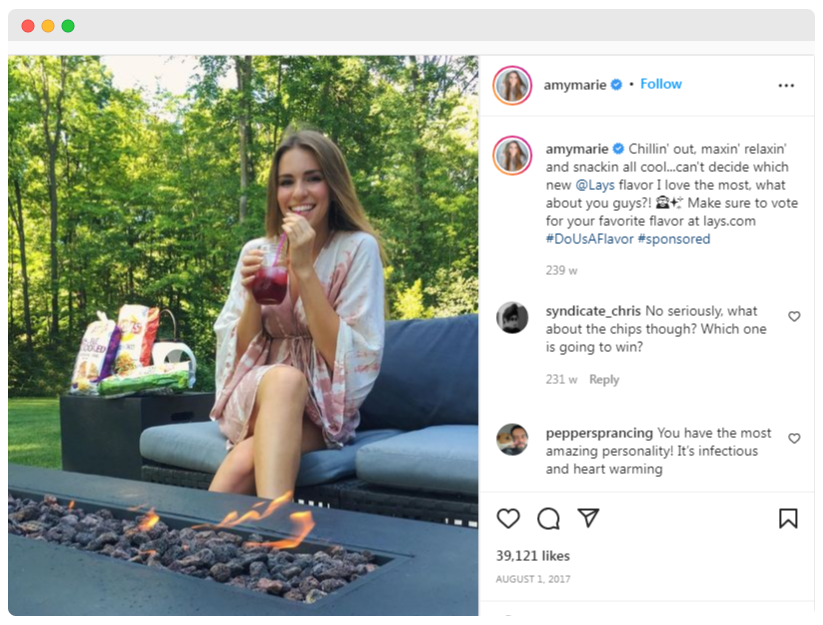
6. Measure hashtag performance
In the world of social media marketing, from researching hashtags to writing, designing social media posts — all your efforts are worth it only if they help you reap results and achieve your business goals.
And, to make your social media goals achievable, you need to track the hashtags’ performance, understand the success of your campaign, and find out what’s working and what needs to be improved.
When using social listening tools to analyze the hashtag’s performance, look at:
- Volume of mentions
- Estimated social media reach
- Type of engagement — likes, comments, shares, or retweets
How to measure hashtag performance?
- To track the hashtags’ performance, you’ll need a hashtag tracking tool. Now, import the hashtags that you have been using across your social media channels
- Analyze the key metrics and gain insights — top-performing posts, top influencers, and audience demographics
- Once you gain these insights, you can create reports and compare the results from different campaigns to understand the success metrics and change your social media strategy.
Few hashtag tips to focus on:
- When using hashtags on platforms like Instagram and LinkedIn, include them in the comment section. By including hashtags in the post, you push away the platform’s algorithm, leading to lower reach. So, avoid it.
- Avoid using hashtags in the middle of your posts. Doing this blocks the reader from reading your post, and they will jump away without reading it.
- Don’t overuse hashtags.
- Be specific and unique while creating a hashtag. When you want to reach a new audience, you won’t see results by using generic keywords like #contentmarketing or #seo. It would be best if you recreated them using a combination of branded and trending hashtags
Wrapping Up
Hashtags today won’t work the way they used to last year and or a few years back. They keep on changing and with these changes, you’ll witness the change in the social media marketing strategy too.
But remember, an effective plan to research and implement hashtags can make the difference.
- Start with niche-based hashtags and use them consistently in all your posts
- Monitor the performance of your hashtags and change your strategy according to their performance

